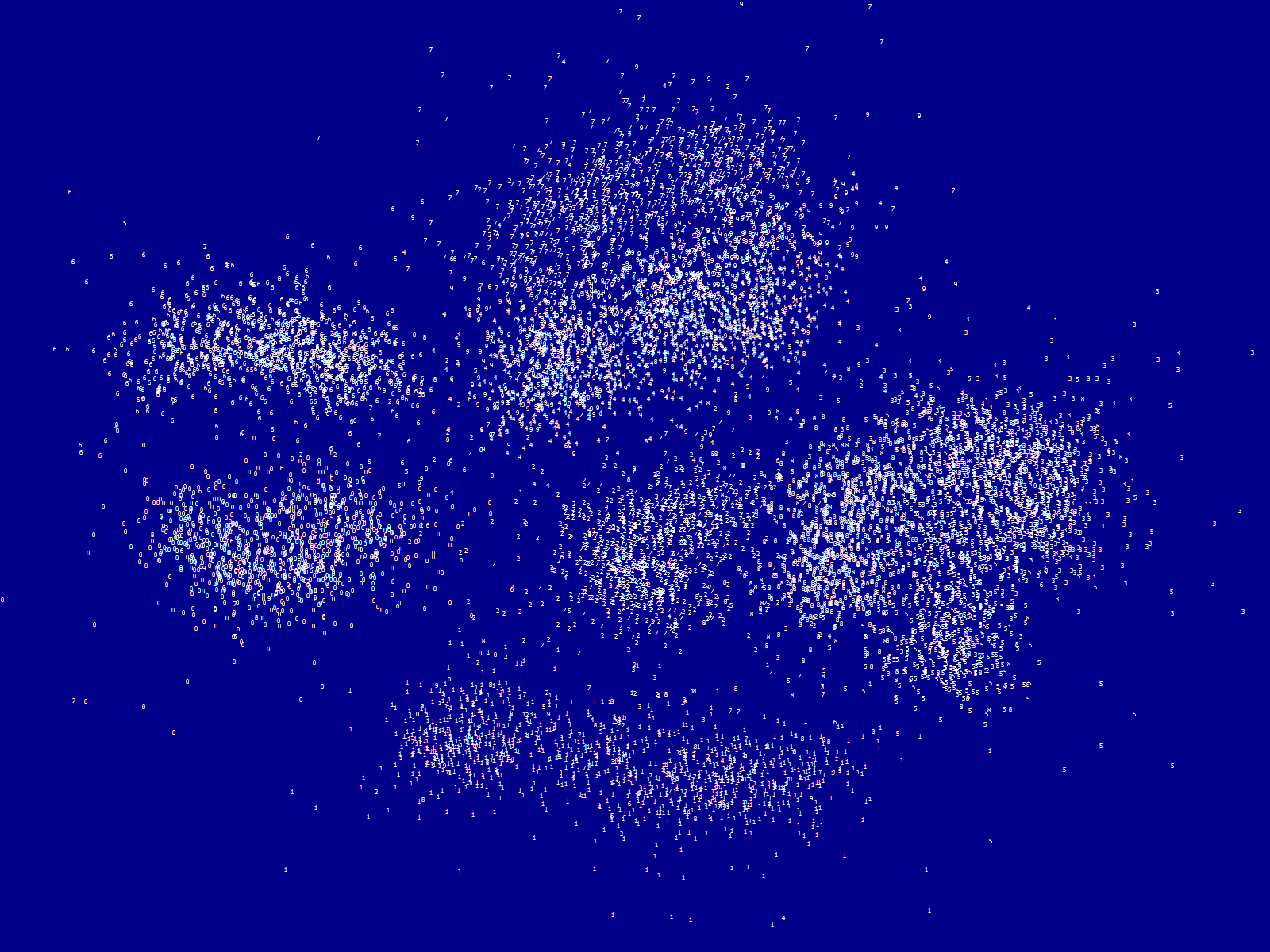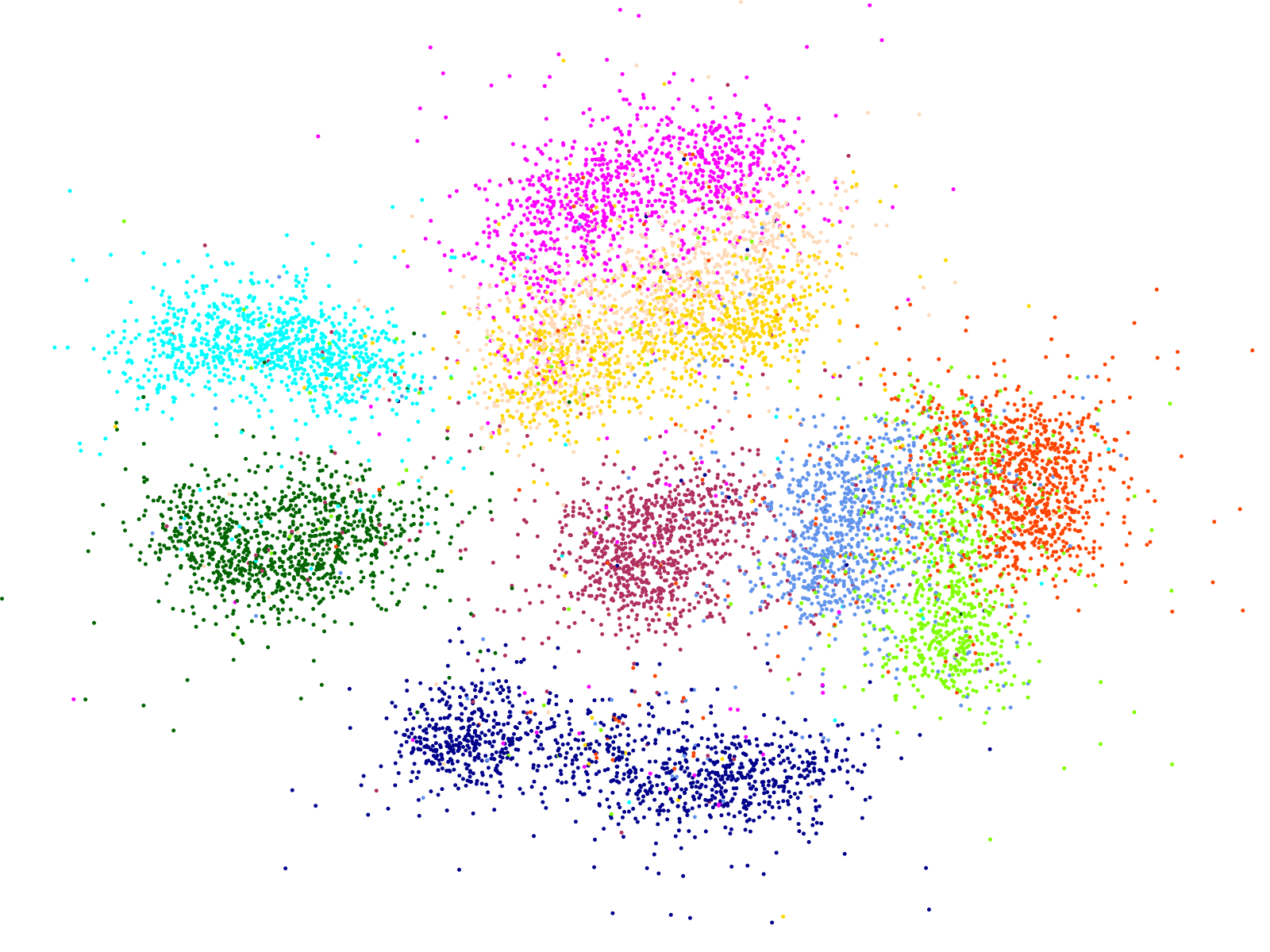This is a C# reimplementation of the JavaScript version, which was based upon the Python version.
"Uniform Manifold Approximation and Projection (UMAP) is a dimension reduction technique that can be used for visualisation similarly to t-SNE, but also for general non-linear dimension reduction" - if you have a set of vectors representing document or entities then you might use the algorithm to reduce those vectors to two or three dimensions in order to plot them and explore clusters.
Install via NuGet:
Install-Package UMAP
Instantiate a Umap instance, pass the array of vectors to the "InitializeFit" method, receive a recommended number of epochs to use from "InitializeFit", call the "Step" method this many times and then request the resulting (reduced dimension) vectors from the "GetEmbedding" method. The vectors passed to "InitializeFit" must all be of the same length. The vectors returned from "GetEmbedding" will be in the same order as the vectors passed to "InitializeFit" (so if you have labels relating to the source vectors then you can apply those labels to the embedding vectors).
// It doesn't matter where this data comes from, so long as it is a
// float[][] and every nested array has the same length
float[][] vectors = ..
// Calculate embedding vectors using the default configuration
var umap = new Umap();
var numberOfEpochs = umap.InitializeFit(vectors);
for (var i = 0; i < numberOfEpochs; i++)
umap.Step();
// This will be a float[][] where each nested array has two elements
// because the default Umap configuration generates 2D embeddings
var embeddings = umap.GetEmbedding();| Umap ctor argument | Description | Default |
|---|---|---|
dimensions |
The number of dimensions to project the data to (commonly 2 or 3) | 2 |
distanceFn |
A custom distance function to use | Umap.DistanceFunctions.Cosine |
random |
A pseudo-random-number generator for controlling stochastic processes | DefaultRandomGenerator.Instance (unit tests use a fixed seed generator that disables parallelisation of the calculation |
numberOfNeighbors |
The number of nearest neighbors to construct the fuzzy manifold in InitializeFit |
15 |
customNumberOfEpochs |
If you wish to call Step a number of times other than that recommended by InitializeFit then it must be specified here The number of nearest neighbors to construct the fuzzy manifold in InitializeFit |
null |
progressReporter |
An optional delegate (Action<float>) that will be called during processing with a rough estimate of progress (from 0 to 1) |
null |
If the input vectors are all normalized and you want to project to three dimensions then you might use:
var umap = new Umap(
distance: Umap.DistanceFunctions.CosineForNormalizedVectors,
dimensions: 3
);This project uses a similar approach as Facebook's fastText for lock-free multi-threaded optimization, by first randomizing the order each point is passed to the optimizer, and then, if using a thread-safe number generator, running each optimization step multi-threaded. The assumption here is that collisions when writing to the projected embeddings vector will only happen at a very low probability, and will have minimum impact on the final results.
If it is not desirable for multiple threads to be used then DefaultRandomGenerator.DisableThreading may be provided as the Umap's "random" constructor argument.
The "Tester" project is a console application that loads vectors that represent the MNIST data resized to 10x10 images and generates two images from it. One ("Output-Label.png") a visualisation that draw the labels (the numeric digit that exist vector represents, in this case) and the second ("Output-Color.png") a visualisation that plots each vector as a circle with a colour corresponding to the label.
To see how it looks in three dimensions, see this CodePen example - this library was used to calculate embedding vectors from MNIST, which were then used to generate JavaScript to render the visualisation in 3D using Plotly.



